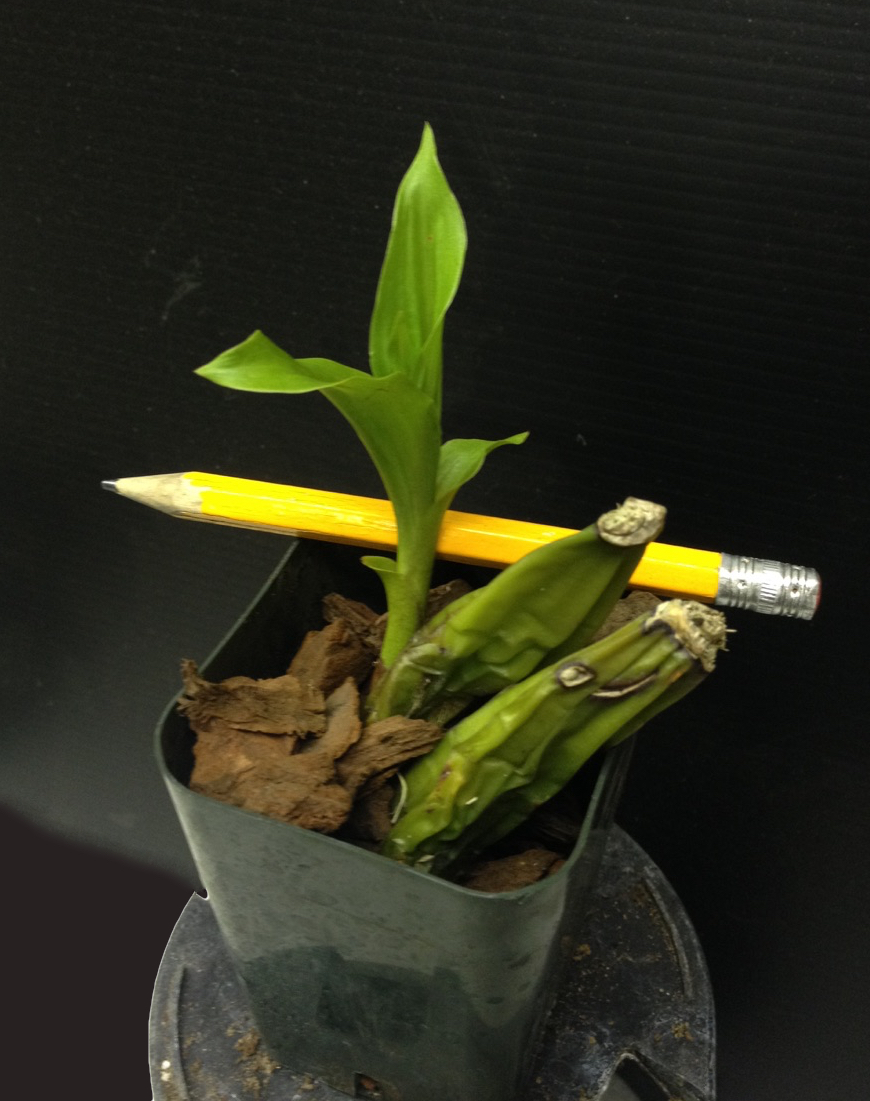Description
If you love uncommon, showy, fragrant orchids, Angulocaste “Cup of Gold” is for you.
Angulocaste is the hybrid genus made from crossing an Anguloa with a Lycaste. Now, these two genera are closely related, and to the unpracticed eye, difficult to distinguish. But unless you’re a species purist, it doesn’t matter. The idea behind “Cup of Gold” was to take the species Anguloa clowesii, a yellow blooming species, and cross it with the very vigorous Lycaste Nobuo (Rowland x aromatica).
Anguloa clowesii’s flower doesn’t open up much like other orchid flowers; it remains ovoid with an opening at the top. They’re actually sometimes described as “tulip” orchids, for this reason.
Crossing this species with Lyc. Nobuo reinforces the gold color AND the fragrance, and produces a chalice-like bloom which is why we’re calling this cross “Cup of Gold”. Actually, it should be “Cups of Gold” as these plants make multiple flower spikes per bulb, but that name didn’t have the same ring to it.
Around 40 Lycaste species grow in Central America, and are characterized by large pseudobulbs, big leaves, and showy, long-lasting flowers. These are impressive orchids, and have had devotees for over 150 years.
The genus Anguloa was originally “discovered” by Europeans in the late 1700s, and was named after Francisco de Angulo, who ran the mines in Peru, which I suppose was a pretty important job for the Spanish Empire in those days.
Anguloa clowesii is known as the tulip orchid, as its cuppy flower looks very much like tulips. The yellow flowers are beautiful and distinctive and charming!
Clearly, Anguloa is closely related to Lycaste, as the plants are difficult to distinguish from each other when not in bloom. Anguloa clowesii does have longer pseudobulbs, almost reminscent of a banana, and that seems to come through in Angulocaste “Cup of Gold”.


